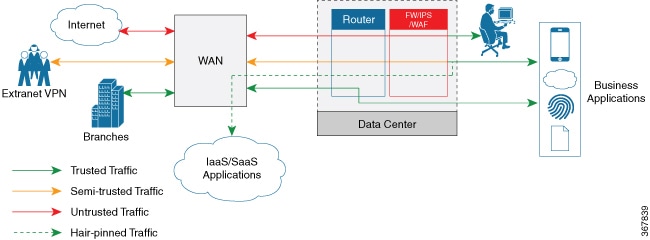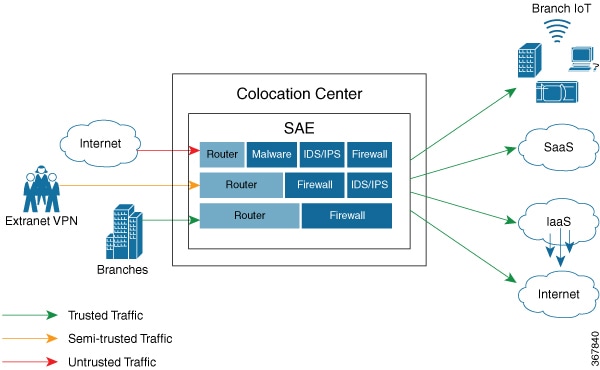Assess Infrastructure and Challenges
This document explains the various stages of SAE journey taking the example of an enterprise, Acme Corp.
About Acme Corp
Acme Corp is a multinational, financial enterprise with global presence. It currently has to bear the expenses of maintaining several global data centers as well as operational expenses of hosting some of its newer applications in cloud environments.
Where Acme is Today
Application Infrastructure
-
Acme currently maintains multiple global data centers where most of its applications are hosted.
-
Some of the newer applications are also hosted in Azure and AWS clouds.
-
Currently, its infrastructure is designed for maximum capacity, which lacks optimum utilization.
Application Consumers
Acme's application consumers are accessing the applications through MPLS and SD-WAN. Such application consumers can be categorized as follows:
-
Regional branches and extranet partners connecting over MPLS
-
Remote employees connecting through remote VPN
-
Partners connecting remotely through IPSec extranet as well as through the internet
Application Providers
Acme's application providers can be categorized as follows: existing private data centers, emerging cloud providers like Azure, and other SaaS providers on the internet.

Challenges
Acme currently faces the following challenegs.
-
The cost of maintaining private data centers is very high.
-
The dedicated physical infrastructure and conventional methods of configuring operating systems and applications limit the speed of data centers to respond to new customers and services.
-
Currently, all traffic terminates into the data center before it can be rerouted appropriately. The security policies are applied in the data center and the traffic is hairpinned back through WAN to reach applications in SaaS and IaaS. This rerouting causes latency.
-
There is no visibility into end-to-end traffic flow, which leads to complexity in troubleshooting and workload analysis.
-
The infrastructure relies on manual configuration and maintenance, which is error-prone.
-
Any new connections and traffic flows require additional hardware such as routers and firewalls. This is not cost-effective at scale. It also limits the speed of responding to new customers and services.

 Feedback
Feedback